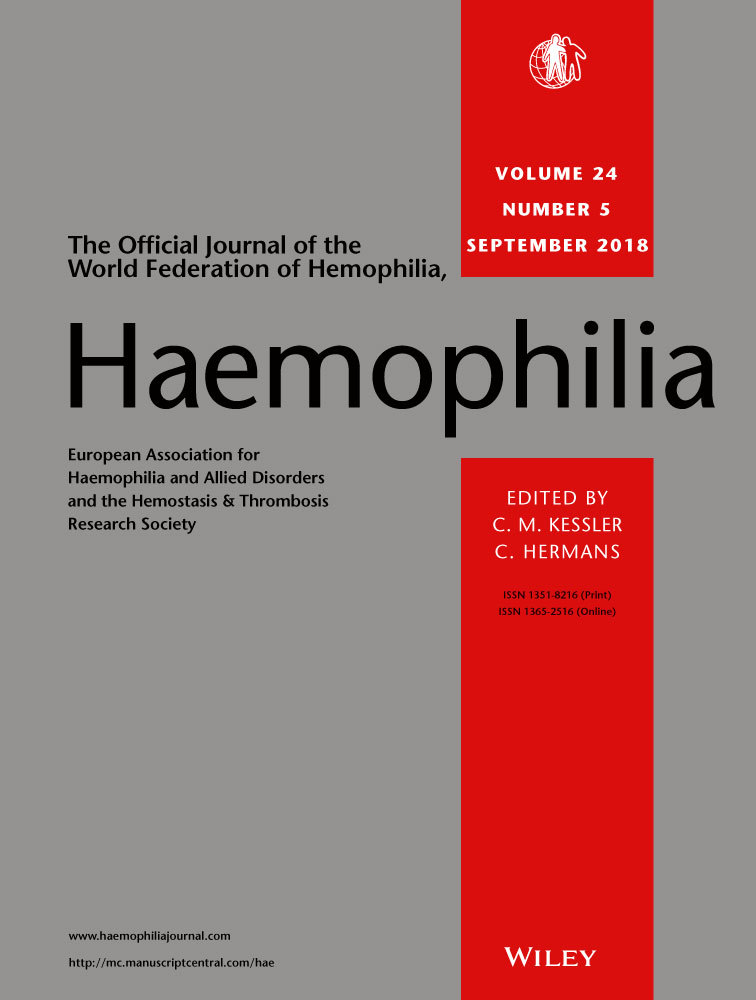Clinical and radiologic results after open-wedge high tibial osteotomy in haemophilic knee arthropathy with varus deformity
Abstract
Introduction
The previous studies have described only closed-wedge high tibial osteotomy (HTO) in haemophilic arthropathy (HA).
Aim
The purpose of this study was to evaluate clinical and radiographic results after open-wedge HTO in HA with varus knee deformity.
Methods
We included 13 open-wedge HTOs in HA performed between 2005 and 2016. The mean age of patients was 28.9 years. Visual analogue scale (VAS), Western Ontario and McMaster Universities (WOMAC), and range of motion (ROM) indices were assessed. Any complications or requirements for total knee arthroplasty (TKA) were investigated. Mechanical axis (MA), minimal joint space width (mJSW) and Pettersson score were measured. Bone union rates at 3 and 6 months postoperative were evaluated.
Results
VAS improved from 5.1 to 2.4 (P < .001). WOMAC was 66.5 preoperatively, and 26.6 postoperatively (P < .001). Pre- and postoperative ROM did not differ significantly. There were no cases of HTO converted to TKA, but one case of HTO required TKA 152 months postoperative. No complications were observed. The MA was corrected from varus 5.1° to valgus 1.2° (P < .001). Pre- and postoperative mJSW did not significantly differ. Pettersson score improved from 3.84 to 2.47 (P < .001). The bone union rates at the osteotomy gap were 45.2% and 67.8% at 3 and 6 months postoperative.
Conclusions
Open-wedge HTO should be considered in cases of HA with varus deformity in young haemophilic patients, even though inflammatory arthritis is not an optimal indication for this procedure. It can be an appropriate treatment with respect to the choice to postpone TKA.




